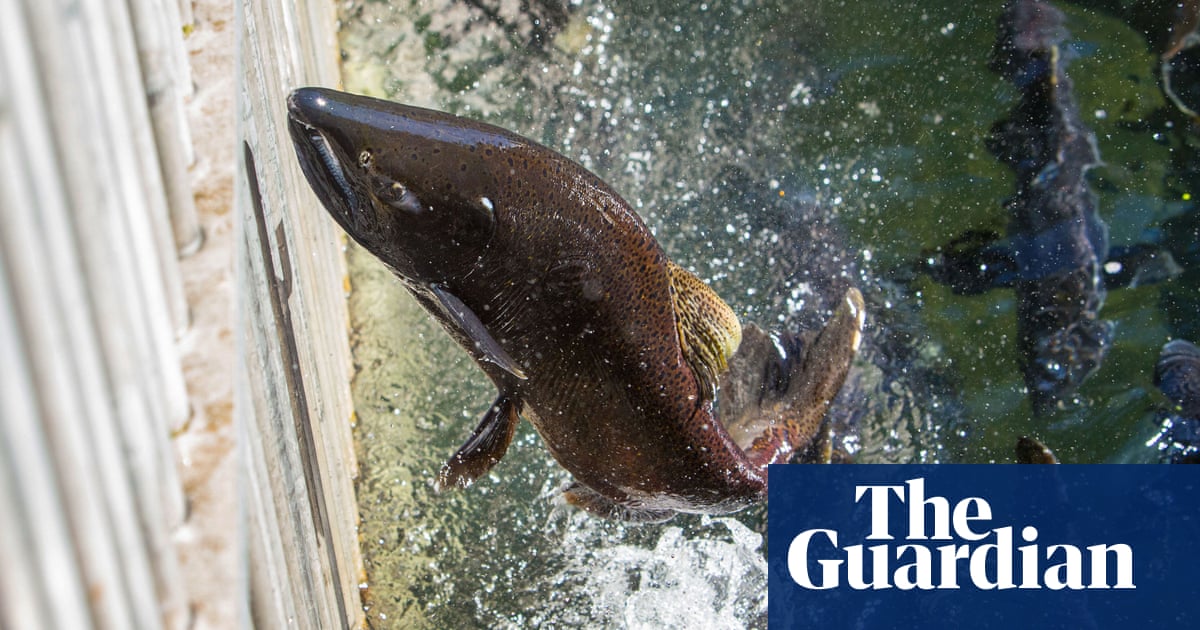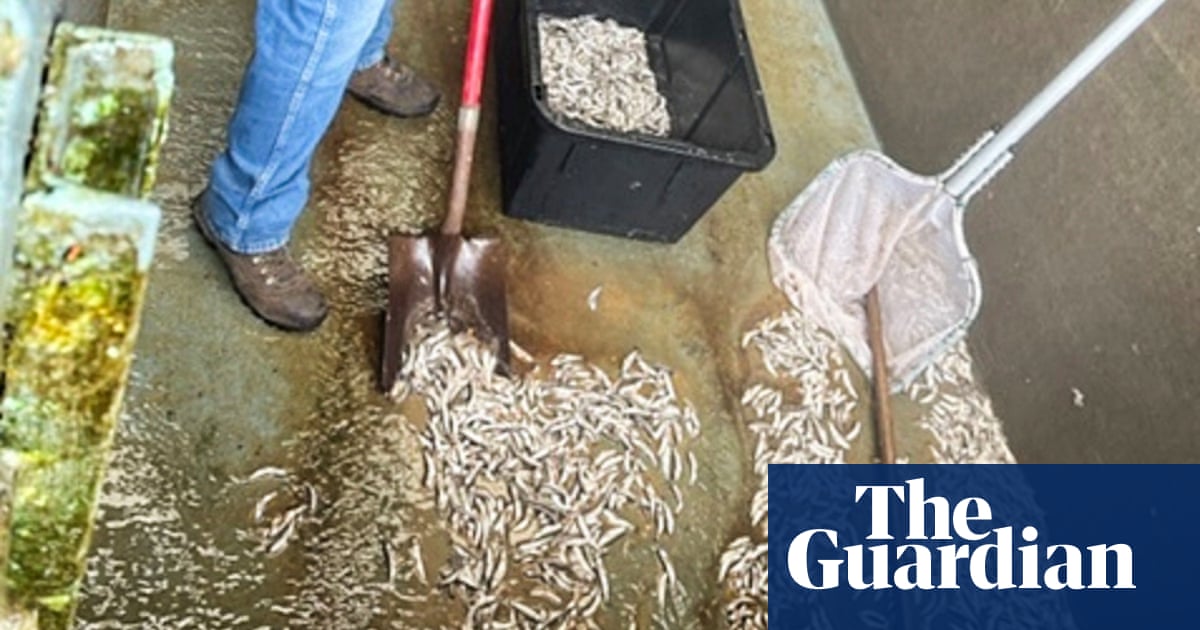Thousands of young salmon survive Oregon truck crash by dropping into nearby creek | Oregon


A creek in Oregon was inadvertently restocked with tens of thousands of young salmon when a tanker carrying the fish overturned and spilled its cargo.
State officials said more than 75% of the 102,000 Chinook salmon smolts that the tanker was transporting from a hatchery to the Imnaha river made it into Lookingglass Creek following the accident last Friday.
The surviving fish, which were intended to bolster numbers of the threatened species in the Imnaha, “hit the water running” and were expected to migrate through the Grande Ronde river to the Pacific Ocean, said Andrew Gibbs, a hatchery coordinator for the Oregon department of fish and wildlife, to the New York Times.
Almost 26,000 smolts perished, their carcasses found either still in the upturned tanker or strewn on the banks of the creek, a tributary to the Grande Ronde. A press release from the department said the dead fish represented about 20% of the total planned to be released into the Imnaha this year, and would mean about 500 to 900 fewer adult fish would return there in the next couple of years.
The driver suffered only minor injuries in the single-vehicle crash after losing control of the 53ft truck after a sharp turn. It rolled on to its passenger side and went over a rocky embankment on its roof, rupturing its sealed tank.
“It’s a kind of fish taxi,” Gibbs told the Times, explaining that the salmon, aged about 18 months, were being transported from the Lookingglass hatchery in Elgin, about 300 miles east of Portland, to the Imnaha, a popular destination for sport fishing.
Once there they would have spent several days acclimating in a specially constructed tank, then continued a 650-mile journey through the Snake and Columbia rivers to the Pacific.
Salmon that made it to the ocean would spend two to three years foraging, then find their way back to the river and die after spawning. “They kind of smell their way back. It’s an incredible life history,” Gibbs said.
The fish that spilled into Lookingglass Creek would consider it their spawning ground and eventually try to return there, officials believe.
The hatchery is part of the state’s fish management operation and raises salmon for sport harvest, and to supplement the threatened wild population on the Imnaha, the department said in the press release.
It was built in 1982 to mitigate for spring Chinook and summer steelhead losses caused by four federal dams constructed on the lower Snake River.
Source link




